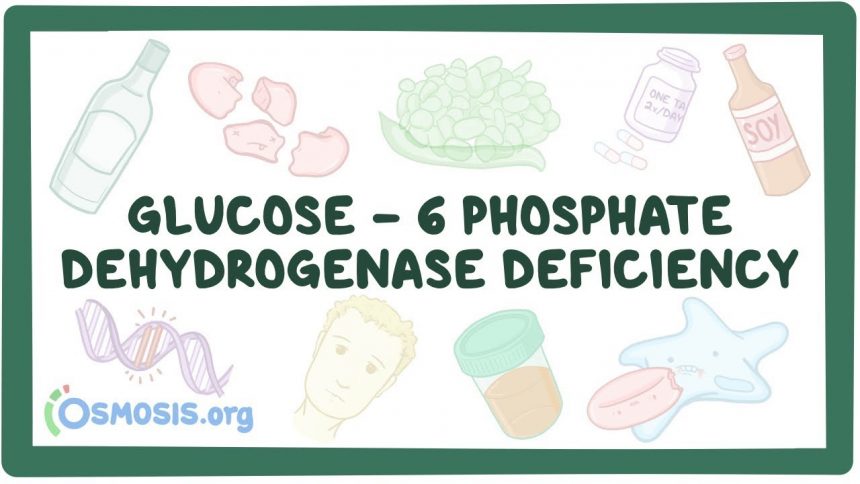Glucose-6-phosphate dehydrogenase (G6PD) deficiency is a condition in which red blood cells break down when the body is exposed to certain drugs or the stress of infection. It is hereditary, which means it is passed down in families.
Causes
G6PD deficiency occurs when a person is missing or does not have enough of an enzyme called glucose-6-phosphate dehydrogenase. This enzyme helps red blood cells work properly.
Too little G6PD leads to the destruction of red blood cells. This process is called hemolysis. When this process is actively occurring, it is called a hemolytic episode. The episodes are most often brief. This is because the body continues to produce new red blood cells, which have normal activity.
Red blood cell destruction can be triggered by infections, certain foods (such as fava beans), and certain medicines, including:
- Antimalarial medicines such as quinine
- Aspirin (high doses)
- Nonsteroidal anti-inflammatory drugs (NSAIDs)
- Quinidine
- Sulfa drugs
- Antibiotics such as quinolones, nitrofurantoin
Other chemicals, such as those in mothballs, can also trigger an episode.
In the United States, G6PD deficiency is more common among blacks than whites. Men are more likely to have this disorder than women.
You are more likely to develop this condition if you:
- Are African American
- Are of Middle Eastern decent, particularly Kurdish or Sephardic Jewish
- Are male
- Have a family history of the deficiency
A form of this disorder is common in whites of Mediterranean descent. This form is also associated with acute episodes of hemolysis. Episodes are longer and more severe than in the other types of the disorder.


Leave a Reply